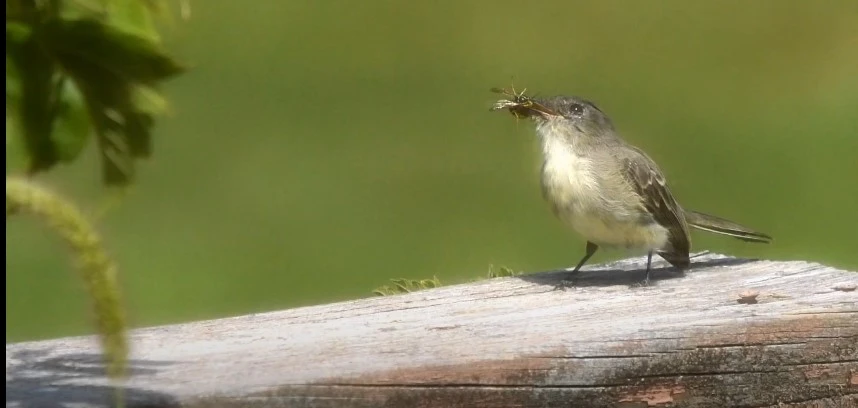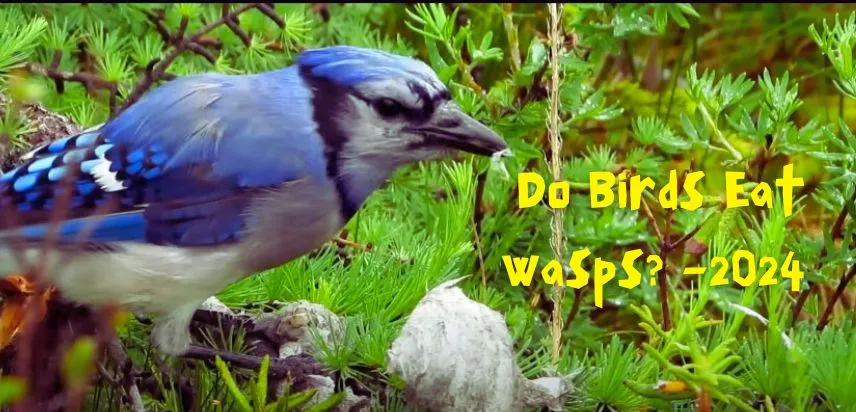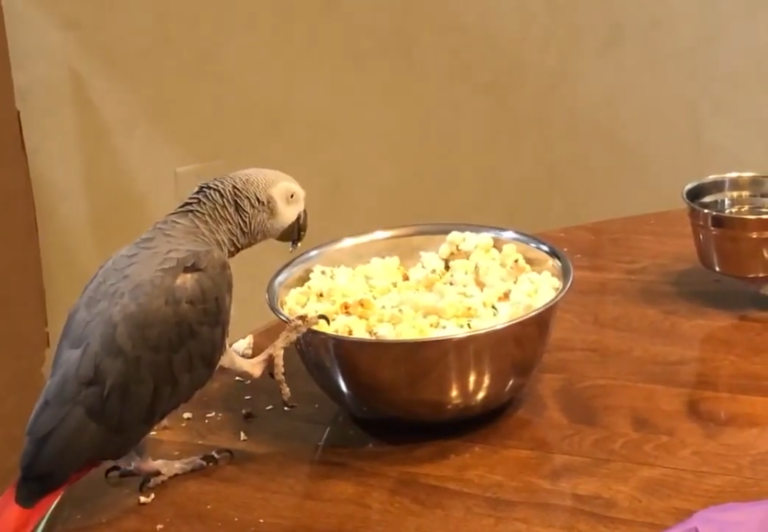The Stunning Truth of Do Birds Eat Wasps? -2024
In the natural world, the connection between prey and predator is surprising. This relationship helps maintain ecosystem biodiversity by preventing single species from becoming too dominant. The predator is the one who captures the prey. The prey is the one eaten by the predator.
Table of Contents
Overview of Birds That Eat Wasp
We are here to uncover one prey-predator relationship by discussing Do Birds Eat Wasps? In which birds are predators and wasps are prey. The answer to this question is the birds who constantly eat bugs will consume wasps. Some others also prey on wasps for survival like blackbirds, and starlings.
Other birds that capture wasps occasionally are orioles, wood peekers, common nighthawks, and sparrows. These birds are smart enough to hunt only solo waps by staying away from wasps’ nests. They capture the carefully through their beaks without being stung.
A Closer Look at Do Any Birds Eat Wasps
Birds dine on wasps as they are energy boosters and have fantastic taste. Let’s discuss those bravest birds who capture and eat wasps. Here are 25 birds that prey wasps using remarkable techniques.

Bee-Eater: Eye-catching Assassins
Bee-Eater is considered the artist of the sky, coloring the sky with their vibrant feathers. These birds eat bees and wasps using their remarkable precision. Who imagined being lethal could be so visually captivating?
European Honey Buzzard: Master of the Sky
European Honey Buzzard is an insectivore that dives bravely into wasps’ nests. The secret of their fearlessness is the special features that protect them from wasp’s stings.
Swallows: Aerial Insectivores
Swallows, the acrobats of the bird family gracefully catch the wasp. Seeing them while capturing the wasp is like watching a high-speed bullet, but it ends with a tasty and satisfying snack.
Blue Jays: Courageous Challengers
With keen eyesight, Blue Jay captures this stinging insect (Wasps). It bravely preys on wasps by preventing from the wasp’s painful sting. As they capture the prey they quickly eat it to get proteins to satisfy their hunger.
Crows: The Opportunistic Hunter
Crows use their sharp brains to capture the waps. They showcase their behavioral adaptability by getting a wasp as a quick meal.
Honey Eater: Nectar Lover With the Thrill for Risk
Try not to be deceived by its attractive name; Honeyeaters balance their nectar diet by capturing wasps occasionally. It adds a spicy flavor to their regular sweetness.
Tanagers: Regular Insect Hunter
Tangers have keen hunting skills to capture a variety of insects including wasps. Despite their painful sting, they bravely prey on them to beat their hunger.
Magpie: Cunning and Smart
Magpies with white and black feathers dine on wasps. They are the most intelligent birds to exist. It doesn’t care about the wasp’s sting and smartly preys on it.
Orioles: Orange-Plumage Insect Hunters
Orioles look so pretty with their orange-colored feathers. They are insectivores, who prey on wasps to satisfy their hunger.
Chickadees: Small but Intense (Chia Seeds Eaters)
Don’t underestimate the courage of Chickadees due to their small size. They prey on wasps with an admirable approach. This bird proves that bravery doesn’t depend on size, it comes in all sizes.
Warblers: Migrant Insectivore
Warblers can fly thousands of miles and hunt for insects like wasps. They capture their prey showing their remarkable hunting skills.
Blue Birds: Backyard Helpers
Bluebirds have a friendly nature in the bird community. They always play their role in controlling the wasp’s population. Their appearance in your backyard is not just charming; it’s beneficial, establishing them as unsung champions of your garden.
Cardinals
Cardinals have bright features that attract not only our attention but also capture the wasps. They are famous among avian creatures and talented in wasp-grasping performance. They are among those birds who enjoy Chia seeds.
Kingbirds: Tyrant of Sky
Kingbirds govern the sky using their iron beak. They dominate the wasps and eat them. With their fearless nature, they are the bosses of the avian world.
Woodpeckers: The Purposeful Drummers
For Woodpeckers, it is not merely the pecking sound; they are on a purposeful journey. When not engaging in drumming, they prey on wasps, converting their pecking sound into a hunt. Woodpeckers also like to enjoy Chia seeds.
Wrens: Little but Mighty
Wrens are tiny but can grasp wasps. They grasp wasp and it looks like a Davis vs Goliath battle. These little creatures prove that size doesn’t matter in searching for a meal.
Pied Flycatcher: Daring Diner
Pied Flycatchers grasp a wasp mid-fight in an exciting way that adds a spicy flavor to their dinner. This teaches us that experimenting with culinary risk can sometimes lead to rewarding meals.
Red-backed Shrike: Nickname “Butcher Bird”
The nickname of the Red-backed Shrike is “The Butcher Bird”. They prey on large insects including wasps and small birds like lizards, and frogs.
Starlings: Group Strategists
Starkings are shining as the ultimate team players in the avian realm. Together, they strategize to seize the wasps, converting their collective hunts into precisely orchestrated performances.
Great Tit: Versatile Feeders
Great Tit is always ready for anything to feed from seeds to wasps. They know well how to seize their prey efficiently.
Blackbird: Opportunist Omnivorous
Blackbirds are not just picky eaters, they also eat birds including wasps. They can grasp whatever is available like a zesty wap or juicy worm.
Mockingbirds: Mimics with Appetite
Mockingbirds are not only known for their unique singing, but they also can imitate the strategy of wasp hunting. They are ready to capture any wasps that are coming their way. They are among the few birds that eat Chia Seeds.
Catbirds: Silent Predators
They are quiet hunters in the avian world, silently capturing their prey before they escape. They act as a secret agent in grasping their prey.
Nighthawks: Nocturnal Hunter
Nighthawks get active after sunset. They try to hunt the wasps under darkness with their remarkable hunting skills.
The benefits of Birds Eating Wasps
Birds eating wasps bring a lot of benefits to the environment as well as to humans. These include
- Birds consuming wasps help to control the wasps’ population.
- When their population is under control, the risk of wasp’s painful sting will be reduced
- It also prevents the wasp’s population from becoming overdominant in the ecosystem.
How Do Birds Eat Red Wasp?
Birds used different techniques to grasp and consume wasps. European bee-eater grasps the wasp in mid-flight using a sharp beak and remarkable flight. Woodpeckers have adapted tongues that help these birds to eat wasp larvae from their nests. It is quite interesting to see various methods birds use to capture their prey.
FAQS
Do all birds eat bees and wasps?
All birds don’t eat wasps. Birds like Bee-Eater, Swallows, Crows, Blue Jays, and many more add wasps to their diet plan.
Can I attract birds that eat wasps to my garden?
You can do this by creating nest sites, providing fresh water, and not using pesticides in your gardens.
How do birds eat wasps without getting stung?
Birds used various techniques, such as swiftly removing the wasp’s stinger, using their feathers for protection, and targeting their weakest spot.
What are the birds that eat wasps in the UK?
In the UK, 24 bird varieties are known to catch and consume wasps including Magpies, Blackbirds, and Starlings.
Do hummingbirds eat wasps?
Yes, a hummingbird, a small bird with a long beak, can prey on insects such as gnats, mosquitoes, ants, beetles, aphids, and certain wasps.
Do wasps eat birds?
Wasps only attack birds when they are defending themselves. Birds are the predator, that catch and eat wasps.
Conclusion
Birds eat wasps using various strategies. Some use their specialized tongue to et wasp’s larvae, while others use their sharp beaks to grasp them. The prey-predator connection brings benefits to the ecosystem. Birds-eating wasps can control their population and prevent their overdominance in society.



